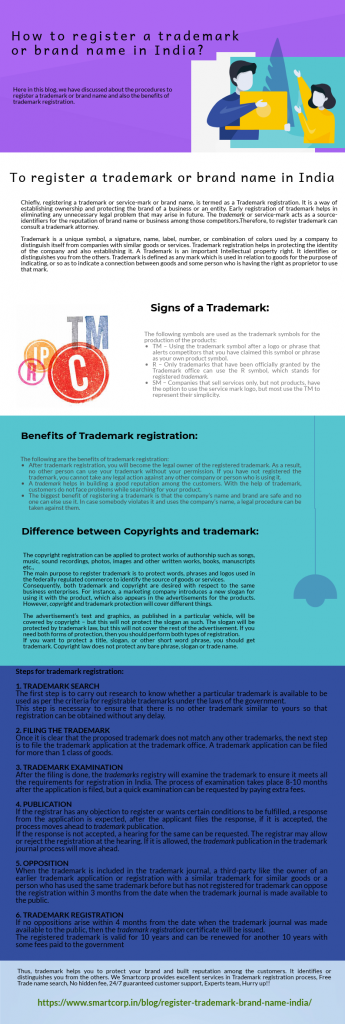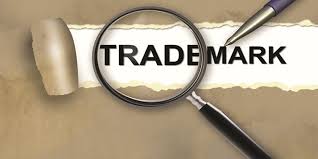
How to register a trademark or brand name in India?
Here in this blog, we have discussed about the procedures to register a trademark or brand name and also the benefits of trademark registration.

Chiefly, registering a trademark or service-mark or brand name, is termed as a Trademark registration. It is a way of establishing ownership and protecting the brand of a business or an entity. Early registration of trademark helps in eliminating any unnecessary legal problem that may arise in future. The trademark or service-mark acts as a source-identifiers for the reputation of brand name or business among those competitors.Therefore, to register trademark can consult a trademark attorney.
Trademark is a unique symbol, a signature, name, label, number, or combination of colors used by a company to distinguish itself from companies with similar goods or services. Trademark registration helps in protecting the identity of the company and also establishing it. A Trademark is an important Intellectual property right. It identifies or distinguishes you from the others. Trademark is defined as any mark which is used in relation to goods for the purpose of indicating, or so as to indicate a connection between goods and some person who is having the right as proprietor to use that mark.
Register a trademark- Benefits:
Once a trademark has been granted, the owner receives three key benefits:
- A notice can be issued to any other businesses thinking of using the same symbol or word as its trademark
- A legal presumption of ownership, which can help fend off would-be users
- The exclusive right to use the claimed trademark
Benefits of Trademark registration:
The following are the benefits of trademark registration:

- After trademark registration, you will become the legal owner of the registered trademark. As a result, no other person can use your trademark without your permission. If you have not registered the trademark, you cannot take any legal action against any other company or person who is using it.
- A trademark helps in building a good reputation among the customers. With the help of trademark, customers do not face problems while searching for your product.
- The biggest benefit of registering a trademark is that the company’s name and brand are safe and no one can else use it. In case somebody violates it and uses the company’s name, a legal procedure can be taken against them.
Reasons to Register a Trademark:
The following are the reasons for a trademark registration:
Legal Protection: Only registered owners can take legal action against damages caused due to trademark infringement. The protection is not given to unregistered business or entity.
Unique Identity: It provides a unique identity to your products which will help the customers in identifying your products among similar goods and services.
Goodwill: The trademark can be used to create trust and goodwill in the minds of the end users that your business is unique. Also, a registered trademark shows that you care about your company’s name and brand.
Creation of Asset: Trademark registration creates an intellectual property, it is an intangible assets. You can sell this right or give franchisees.
Signs of a Trademark:
The following symbols are used as the trademark symbols for the production of the products:
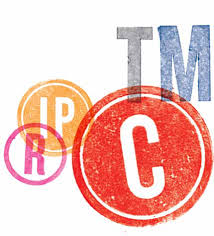
- TM – Using the trademark symbol after a logo or phrase that alerts competitors that you have claimed this symbol or phrase as your own product symbol.
- R – Only trademarks that have been officially granted by the Trademark office can use the R symbol, which stands for registered trademark.
- SM – Companies that sell services only, but not products, have the option to use the service mark logo, but most use the TM to represent their simplicity.
Selecting a good trademark:
A trademark must be chosen carefully. If you are launching a product and adopting a new trademark, please bear in mind that the scope of legal protection offer to your product would be depend on the type of trademark chosen.
The most common mistake people will do is choosing a word that is descriptive of the goods or services. Business people will the belief that the consumer will know straight away what the product is or the service rendered. The same consequences can easily be obtained by combining a distinctive and fanciful trademark with a word which indicates the goods or services. E.g. Kodak film.
Descriptive trademarks are difficult to register and enforce. Although, it may be easier to market such products at the beginning, such trademarks are offered the least amount of protection and therefore, in the future, it is not possible to stop your competitors from using the same or similar trademarks.
The better idea will be adopting a coined word, which has no reference to the goods or services upon which it is used. E.g. Nikon .Another option is to adopt an arbitrary word to register for trademark, which has no significance to the goods or services upon which it is used. E.g. Thomas computers; Lilly software .The more unique a trademark is, the broader will be the available scope of protection.
Difference between Copyrights and trademark:
The copyright registration can be applied to protect works of authorship such as songs, music, sound recordings, photos, images and other written works, books, manuscripts etc.,
The main purpose to register trademark is to protect words, phrases and logos used in the federally regulated commerce to identify the source of goods or services.
Consequently, both trademark and copyright are desired with respect to the same business enterprises. For instance, a marketing company introduces a new slogan for using it with the product, which also appears in the advertisements for the products. However, copyright and trademark protection will cover different things.

The advertisement’s text and graphics, as published in a particular vehicle, will be covered by copyright – but this will not protect the slogan as such. The slogan will be protected by trademark law, but this will not cover the rest of the advertisement. If you need both forms of protection, then you should perform both types of registration.
If you want to protect a title, slogan, or other short word phrase, you should get trademark. Copyright law does not protect any bare phrase, slogan or trade name.
Protection of Trademark:
Moreover, an image can be protected by trademark or copyright law depends upon its intention to identify the source of goods or services. If an image is used temporarily in an advertisement campaign, then it cannot be protected using use logo.
The registration process of copyright and trademark are completely different. The filing fee of copyright registration is small and the time to obtain registration is relatively short. The examination by the Copyright Office is limited to ensuring that the registration application is properly completed and suitable copies are attached.
For trademark, the filing fee is more substantial and the time to obtain registration is much longer. The examination by the Trademark Office includes a practical review of examining marks which are found to be confusingly similar. While copyright registration is generally an administrative process, trademark registration is very much an adversarial process.
Difference between a Patent and a Trademark:
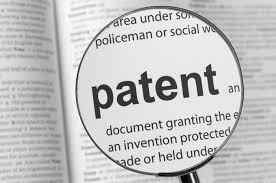
Patent registration prevent others from making or selling an invention, but trademarks protect the words, phrases, symbols, logos, or other devices used to identify the source of goods or services from usage by other competitors. Trademarks gives an owner exclusive use of certain images or phrases, and the right to prevent others from using a similar mark, which would confuse consumers about who was producing the goods or services the consumer was buying.
Typically, overlap does not occur, but in some cases, when a design patent protects the ornamental design of the product and the design is also used as an identifying symbol, both trademark and patent protection may apply.
Steps for trademark registration:
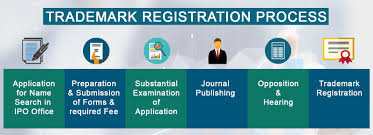
1. Trademark search
The first step is to carry out research to know whether a particular trademark is available to be used as per the criteria for registrable trademarks under the laws of the government.
This step is necessary to ensure that there is no other trademark similar to yours so that registration can be obtained without any delay.
2. Filing the trademark
Once it is clear that the proposed trademark does not match any other trademarks, the next step is to file the trademark application at the trademark office. A trademark application can be filed for more than 1 class of goods.
3. Trademark Examination
After the filing is done, the trademarks registry will examine the trademark to ensure it meets all the requirements for registration in India. The process of examination takes place 8-10 months after the application is filed, but a quick examination can be requested by paying extra fees.
4. Publication
If the registrar has any objection to register or wants certain conditions to be fulfilled, a response from the application is expected, after the applicant files the response, if it is accepted, the process moves ahead to trademark publication.
If the response is not accepted, a hearing for the same can be requested. The registrar may allow or reject the registration at the hearing. If it is allowed, the trademark publication in the trademark journal process will move ahead.
5. Opposition
When the trademark is included in the trademark journal, a third-party like the owner of an earlier trademark application or registration with a similar trademark for similar goods or a person who has used the same trademark before but has not registered for trademark can oppose the registration within 3 months from the date when the trademark journal is made available to the public.
6. Trademark registration

If no oppositions arise within 4 months from the date when the trademark journal was made available to the public, then the trademark registration certificate will be issued.
The registered trademark is valid for 10 years and can be renewed for another 10 years with some fees paid to the government
Requirements of Trademark registration:
To register a trademark the following documents are required:
- Name of the Applicant – individual/company/proprietorship firm/trust/partnership filing the application. In case of joint applicants/partnership details of all the applicants/ partners.
- Address of Applicants who is filing the application.
- Nature of the entity filing the application, it may be an individual/proprietor/partnership firm/ company/ HUF/ LLC.
- Type of products or services for which the mark is used.
- Nature and the type of your business such as Manufacturer/ Trader/ Service provider.
- If the mark is already in use, then the date since when the appropriate mark has been in used in India.
- Date of the first commercial use of the certain mark anywhere in the world.
- A copy of the mark or logo, preferably soft copy for which trademark is sought.
- A signed Power of Attorney (Form TM-48) on Stamp Paper in favour of the Trademark Agent or Advocate.
Conclusion:
Thus, trademark helps you to protect your brand and built reputation among the customers. It identifies or distinguishes you from the others. We Smartcorp provides excellent services in Trademark registration process, Free Trade name search, No hidden fee, 24/7 guaranteed customer support, Experts team, Hurry up!!
